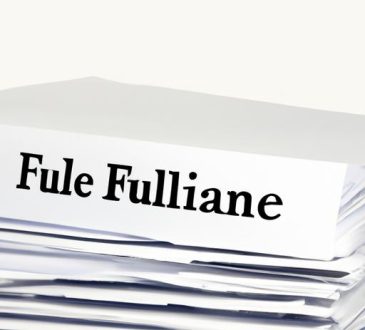
Introduction
Life insurance is a crucial aspect of financial planning that provides security and peace of mind for you and your loved ones. Whether you’re starting your career, raising a family, or enjoying retirement, having the right life insurance policy is essential. However, understanding the factors that influence life insurance costs can be overwhelming. In this article, I will guide you through the intricacies of life insurance premiums, specifically focusing on how age impacts the cost.
A. Importance of Life Insurance
Life insurance serves as a safety net, ensuring that your loved ones are financially protected in the event of your untimely demise. It provides a lump sum payment, known as the death benefit, to your beneficiaries, helping them cover expenses such as mortgage payments, education costs, and daily living expenses. Life insurance offers peace of mind, knowing that your family’s financial future is secure, even when you are no longer there to provide for them.
B. Factors Affecting Life Insurance Costs
Life insurance premiums are determined by several factors, including age, health status, lifestyle choices, and occupation. Among these, age plays a significant role in determining the cost of life insurance. As we age, the risk of developing health issues increases, making life insurance more expensive. Additionally, older individuals are perceived to have a higher probability of making a claim, resulting in higher premiums.
Now that we’ve established the importance of life insurance and the factors influencing its costs, let’s delve deeper into how age impacts the cost of life insurance. Stay with me as we explore the different age brackets and their associated premiums.
Understanding Life Insurance
A. Definition and Types of Life Insurance Policies
Life insurance is a contract between you and an insurance company, where you make regular premium payments in exchange for financial protection. There are several types of life insurance policies available, each catering to different needs and goals. The most common ones include:
-
Term Life Insurance: This policy provides coverage for a specified period, typically 10, 20, or 30 years. It offers a death benefit to your beneficiaries if you pass away during the policy term. Term life insurance is more affordable compared to other options and is ideal for those seeking temporary coverage.
-
Whole Life Insurance: As the name suggests, whole life insurance provides lifelong coverage. It offers a death benefit as well as a cash value component that grows over time. Whole life insurance premiums are higher, but the policy accumulates cash value, which you can borrow against or withdraw.
-
Universal Life Insurance: Universal life insurance combines a death benefit with a savings component. It allows you to adjust your premium payments and death benefit as per your changing needs. The policy accumulates cash value, which can be used to cover premiums or withdrawn.
B. Benefits of Having Life Insurance
Having life insurance brings numerous benefits, both for you and your loved ones. Some key advantages include:
-
Financial Protection: Life insurance ensures that your dependents are financially protected in the event of your death. It provides a lump sum payment that can be used to cover expenses such as mortgage payments, education costs, and everyday living expenses.
-
Estate Planning: Life insurance can be utilized as an estate planning tool, allowing you to leave a legacy for your heirs. It helps cover estate taxes, ensuring that your beneficiaries receive the maximum inheritance possible.
-
Business Continuity: If you own a business, life insurance can help ensure its continuity in case of your untimely demise. The policy proceeds can be used to repay business debts, facilitate ownership transfers, or provide ongoing financial support.
Understanding the various types of life insurance policies and the benefits they offer is crucial in making an informed decision about your coverage needs. In the next section, we will explore the factors that influence life insurance costs, with a specific focus on age. Stay tuned to discover how age impacts the affordability of life insurance premiums.
Cost of Life Insurance by Age
Age is a crucial factor when it comes to determining the cost of life insurance. Insurance providers consider age as an indicator of risk, as the likelihood of developing health issues increases with age. Let’s explore how life insurance premiums vary across different age groups:
A. Life Insurance Premiums for Young Adults (18-30 years)
For young adults, life insurance premiums tend to be relatively affordable. At this stage of life, individuals are usually in good health, have fewer pre-existing conditions, and pose a lower risk to insurance companies. Young adults have the opportunity to secure cost-effective life insurance policies with favorable rates and coverage options. It’s advisable to lock in a policy at a younger age to take advantage of lower premiums in the long run.
B. Life Insurance Premiums for Middle-aged Individuals (31-50 years)
As individuals enter their 30s and 40s, life insurance premiums typically increase. This is because the risk of developing health issues starts to rise, and insurance providers adjust their premiums accordingly. Middle-aged individuals may have more responsibilities, such as mortgages, children’s education, and other financial obligations. It becomes essential to review life insurance policies and ensure adequate coverage to protect loved ones and maintain financial stability.
C. Life Insurance Premiums for Seniors (51+ years)
For seniors aged 51 and above, life insurance premiums can be significantly higher compared to younger age groups. As individuals age, the likelihood of developing health conditions increases, leading to higher insurance costs. However, it’s important to note that there are still life insurance options available for seniors, such as guaranteed issue or simplified issue policies. These policies may have higher premiums but offer coverage without the need for a medical exam.
Understanding how life insurance premiums change with age allows you to make informed decisions when selecting a policy that meets your needs and budget. Now that we’ve explored the impact of age on life insurance costs, let’s discover some practical tips to help lower these costs in the next section.
Tips to Lower Life Insurance Costs
Life insurance is an essential investment, but that doesn’t mean you have to break the bank to obtain the coverage you need. There are several strategies you can employ to lower your life insurance costs without compromising on the protection it provides. Let’s explore some practical tips that can help you save money on your life insurance premiums.
A. Maintaining a Healthy Lifestyle
Taking care of your health not only benefits your overall well-being but can also positively impact your life insurance costs. Insurers consider your health status when calculating premiums, and individuals with healthier lifestyles are often rewarded with lower rates. By adopting healthy habits such as regular exercise, a balanced diet, and avoiding smoking or excessive alcohol consumption, you can demonstrate to insurers that you are a lower-risk applicant, potentially leading to reduced life insurance premiums.
B. Regular Health Check-ups
Regular health check-ups are crucial for identifying any underlying health conditions and addressing them promptly. By staying on top of your health and addressing any concerns early on, you can avoid potential premium increases caused by a worsening health condition. Furthermore, some insurance providers offer discounted rates for individuals who undergo regular health screenings, making it worth your while to prioritize preventive care.
C. Choosing the Right Policy and Coverage
When it comes to life insurance, one size does not fit all. Assessing your specific needs and selecting the right policy and coverage can help you optimize your insurance costs. Consider factors such as your financial obligations, dependents, and long-term goals when determining the appropriate coverage amount. Additionally, comparing quotes from different insurers and understanding the terms and conditions of each policy can help you identify the most cost-effective option that meets your needs.
By implementing these tips, you can take proactive steps to lower your life insurance costs while still ensuring adequate coverage for you and your loved ones. Remember, maintaining a healthy lifestyle, prioritizing regular health check-ups, and selecting the right policy are all essential factors in securing affordable life insurance premiums.
Conclusion
In conclusion, understanding the cost of life insurance by age is crucial when planning for your financial future. As we’ve explored, age plays a significant role in determining the premiums you’ll pay for life insurance. Young adults can take advantage of lower premiums, while middle-aged individuals may experience a slight increase. Seniors, on the other hand, may face higher premiums due to increased health risks.
When considering life insurance, it’s essential to evaluate your needs, considering factors like your age, health status, and financial obligations. By maintaining a healthy lifestyle, regularly reviewing your policy, and seeking the guidance of a trusted insurance professional, you can make informed decisions to ensure financial security for yourself and your loved ones.
At insurance.codepel.com, we understand the complexities of life insurance and are committed to providing you with the information and resources needed to make informed choices. Remember, life insurance is not only about protecting your loved ones; it’s an investment in your peace of mind. Don’t wait; start exploring your options today!
Remember, insurance.codepel.com is here to help you navigate the world of life insurance. Reach out to our experts for personalized guidance and quotes tailored to your needs. Secure your future and protect your loved ones with the right life insurance policy.



